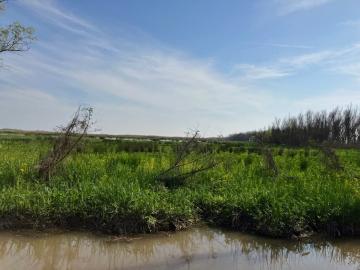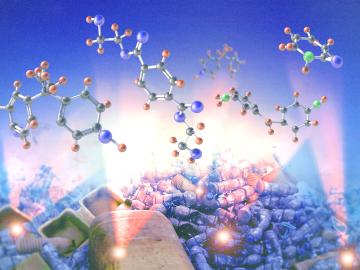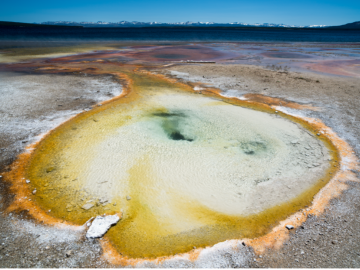
Filter News
Area of Research
- Advanced Manufacturing (7)
- Biology and Environment (19)
- Building Technologies (1)
- Computational Biology (1)
- Computational Engineering (2)
- Computer Science (10)
- Energy Science (34)
- Fusion and Fission (1)
- Fusion Energy (7)
- Isotopes (3)
- Materials (28)
- Materials for Computing (8)
- Mathematics (1)
- National Security (3)
- Neutron Science (6)
- Nuclear Science and Technology (7)
- Nuclear Systems Modeling, Simulation and Validation (1)
- Quantum information Science (3)
- Supercomputing (19)
News Type
News Topics
- (-) Advanced Reactors (13)
- (-) Biology (21)
- (-) Composites (11)
- (-) Computer Science (42)
- (-) Cybersecurity (3)
- (-) High-Performance Computing (12)
- (-) Isotopes (5)
- (-) Materials (36)
- (-) Microscopy (11)
- (-) Nanotechnology (12)
- (-) Space Exploration (10)
- 3-D Printing/Advanced Manufacturing (34)
- Artificial Intelligence (16)
- Big Data (17)
- Bioenergy (17)
- Biomedical (11)
- Biotechnology (4)
- Buildings (21)
- Chemical Sciences (13)
- Clean Water (14)
- Coronavirus (11)
- Critical Materials (12)
- Emergency (1)
- Energy Storage (32)
- Environment (48)
- Exascale Computing (1)
- Fossil Energy (1)
- Frontier (1)
- Fusion (9)
- Grid (22)
- Hydropower (6)
- Irradiation (2)
- ITER (3)
- Machine Learning (14)
- Materials Science (34)
- Mathematics (3)
- Mercury (3)
- Molten Salt (5)
- National Security (3)
- Neutron Science (27)
- Nuclear Energy (19)
- Partnerships (2)
- Physics (4)
- Polymers (10)
- Quantum Computing (5)
- Quantum Science (12)
- Security (1)
- Simulation (9)
- Statistics (1)
- Summit (8)
- Transportation (36)
Media Contacts

ORNL climate modeling expertise contributed to a project that assessed global emissions of ammonia from croplands now and in a warmer future, while also identifying solutions tuned to local growing conditions.

Scientists at the Department of Energy’s Oak Ridge National Laboratory are using a new modeling framework in conjunction with data collected from marshes in the Mississippi Delta to improve predictions of climate-warming methane and nitrous oxide.

Electric vehicles can drive longer distances if their lithium-ion batteries deliver more energy in a lighter package. A prime weight-loss candidate is the current collector, a component that often adds 10% to the weight of a battery cell without contributing energy.

Almost 80% of plastic in the waste stream ends up in landfills or accumulates in the environment. Oak Ridge National Laboratory scientists have developed a technology that converts a conventionally unrecyclable mixture of plastic waste into useful chemicals, presenting a new strategy in the toolkit to combat global plastic waste.

Oak Ridge National Laboratory scientists studied hot springs on different continents and found similarities in how some microbes adapted despite their geographic diversity.

In the search for ways to fight methylmercury in global waterways, scientists at Oak Ridge National Laboratory discovered that some forms of phytoplankton are good at degrading the potent neurotoxin.

An advance in a topological insulator material — whose interior behaves like an electrical insulator but whose surface behaves like a conductor — could revolutionize the fields of next-generation electronics and quantum computing, according to scientists at ORNL.

Oak Ridge National Laboratory scientists exploring bioenergy plant genetics have made a surprising discovery: a protein domain that could lead to new COVID-19 treatments.

Scientists at ORNL developed a competitive, eco-friendly alternative made without harmful blowing agents.

ORNL researchers have identified specific proteins and amino acids that could control bioenergy plants’ ability to identify beneficial microbes that can enhance plant growth and storage of carbon in soils.


